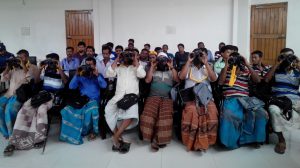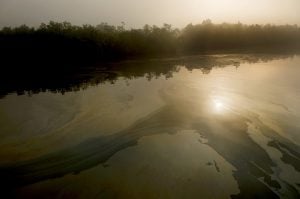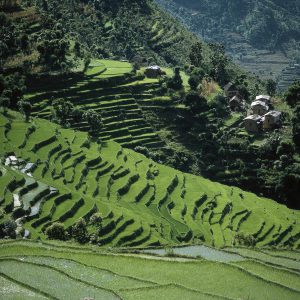If many of India’s ponds, wells, stepwells, springs, check dams and other traditional water harvesting systems are still in working order today, if at least a few of India’s rivers have been revived, much of the credit must go to Anupam Mishra. Through reportage, analysis and advocacy sustained over three decades, this incisive speaker who never raised his voice ensured that all of India’s traditional ways of conserving water were not given up to chase the mirage of piped water supply for everybody.
Mishra toured Rajasthan – India’s most water-scarce state – during the drought years of 1986 and 1987 and found villages that were able to cope because residents had conserved their wells and protected the slopes so that water could flow down to these wells. This was in sharp contrast to the majority of villages where engineers from the public works department of the state government had promised piped water supply and discouraged residents from conserving the wells – they could not keep the promise in drought years.
![Anupam Mishra, speaking, with Kalyan Rudra, head of the West Bengal Pollution Control Board on his right [image courtesy WWF India]](/wp-content/uploads/2016/12/Anupam_Mishra2.jpg)
Born on December 22, 1947, Mishra started his lifelong association with the Gandhi Peace Foundation in 1969. One of his first missions was to be in the team that negotiated the surrender of the dacoits of Chambal in the 1970s.
In 1973, Mishra heard about a movement by the residents of Chamoli district in then Uttar Pradesh (now Uttarakhand) to protest cutting of trees by a sports goods manufacturing firm. His pioneering reportage on it brought what is now known as the Chipko movement to the world stage.
Till his dying day, Mishra remained a friend, philosopher and guide to the Chipko movement, a role he also played to hundreds of people working to save ponds, wells, stepwells, springs or check dams. When Magsaysay Award winner Rajendra Singh – known as the waterman of India – first conceived the idea of reviving a small river in Rajasthan, Mishra acted as the mentor.
Mishra’s research into traditional water harvesting had practical outcomes. In his book, he described a water management system, that used to be practised in the Garhwal Himalayas, but had fallen into disuse for over 200 years. The system was revived once the book was published, and continues today with great success. All over India, About 5,000 large and small ponds have been revived by people inspired by the book.
![Mr Mishra's last public appearance was at India Rivers Week, flanked by Kapil Mishra and Kalyan Rudra, with Ravi Singh, head of WWF India, on extreme left [image courtesy WWF India]](/wp-content/uploads/2016/12/Anupam_Mishra3.jpg)
A recipient of the Jamnalal Bajaj Award and the Indira Gandhi Paryavaran Puraskar of the Ministry of Environment, Forests and Climate Change, Mishra remained a trenchant critic of government policies such as the river interlinking scheme. In one of his more recent speeches, he demolished the government case to link the rivers Ken and Betwa in northern Madhya Pradesh, and showed how it would be financially and ecologically better to provide water by harvesting rainfall.
His interests went beyond environment. I met him in 1991, when he was trying to put together a peace mission in an effort to avert the First Gulf War. By the time the mission was put together, the war had started and the plan had to be aborted. But peace – domestically and internationally – was one of the goals he pursued forever.
Besides writing, speaking and mentoring a whole generation of journalists, Mishra ran the environment unit of the Gandhi Peace Foundation and edited the foundation’s Hindi bi-monthly journal Gandhi Marg. His last public appearance was at the inauguration of India Rivers Week 2016 on November 28. He had already been fighting cancer since the early months of the year, and he looked visibly ill. When I greeted him and asked after his health, he said, “The doctors have given me just a few weeks more. Still, I decided I had to come for this, to honour those who have dedicated their lives to the cause of reviving rivers.”
Mishra died at the All India Institute of Medical Sciences early on the morning of December 19. He leaves behind his wife Manjushree and son Shubham.
![<p>Anupam Mishra listening to Kapil Mishra, Delhi’s Water Minister [image courtesy WWF India]</p>](https://dialogue.earth/content/uploads/2016/12/Anupam_Mishra1-300x200.jpg)








